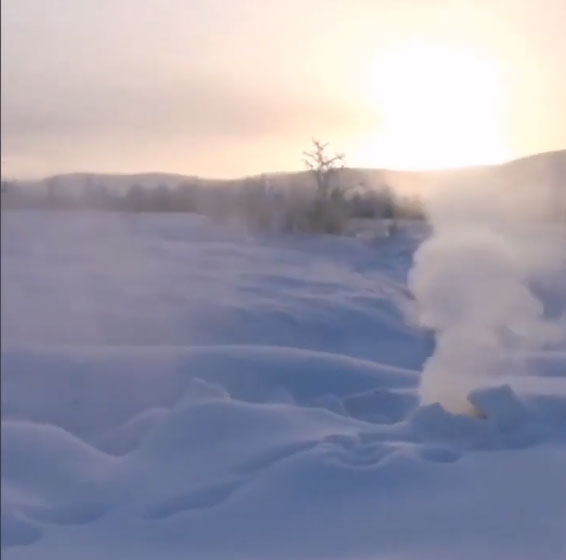Photographer captures smoke rising from underground fires fueled by peat and methane, while snow blankets the ground.
Semyon Sivtsev, a photographer from Oymyakon, Yakutia, Russia, documented the scene of smoke rising from the completely frozen ground, reported Interesting Engineering on December 9. Oymyakon experiences colder winters than any other city in the world, with average temperatures around -50 degrees Celsius. It is considered the coldest inhabited place on Earth. The record low temperature in Oymyakon is -67.7 degrees Celsius, recorded in January 1924.
Although Oymyakon means “the place where water does not freeze” due to a nearby hot spring, the village is situated in a permafrost area, meaning the ground temperature is always below 0 degrees Celsius and snow is ever-present.
Despite the low temperatures, peat fires or “zombie fires” fueled by peat and methane continue to burn underground. This means that underground fires can reignite when the weather becomes dry.

Despite the low temperatures here, zombie fires continue to burn underground.
“I filmed the smoke rising near the meadow adjacent to Khara Tumul village, not far from Oymyakon. That is where wildfires occurred last summer,” Sivtsev stated. Wildfires in the Tomponsky district of Yakutia began in May of this year, prompting Russian authorities to declare a state of emergency in northeastern Siberia. The fires have burned 18.16 million hectares of forest this year and continue to smolder underground during winter.
There has been a case of zombie fires burning in the nearby Mundullakh area for several years, according to Sivtsev. “The fire was eventually extinguished by a combination of melting snow and heavy rain, and a lake formed four years ago. The peat burned out completely, and water took its place. This was also aided by the melting permafrost, and in recent years, we have experienced heavy rainfall during the summer. Last summer was relatively dry,” he added.
With carbon-rich soil formed from vegetation slowly decomposing over thousands of years, such fires can produce up to 244 million tons of CO2. Scientists have also observed that the emergence of zombie fires is closely linked to climate change. Data shows they appear after intense and prolonged wildfires during hot summers.


















































